As I have already pointed out, I am getting old and my faculties are declining. Every now and then I look back for an article I have written to refer to and discover I have never posted it.
During the discussion of camouflage I referred to “The Home Guard Fieldcraft Manual” by Maj John Langdon-Davies.
Despite its age, this is a book I would recommend to anyone remotely interested in camouflage or not getting shot.
One of the most memorable parts of the book is Langdon-Davies’ instructions on how to create a “sniper suit” from open weave hessian.
Don’t get too hung up on the “sniper” label.
Langdon-Davies considers camouflage to be a skill that all soldiers should be adept at and comments that “twenty rifle rounds at 25 yards will be far more effective that fifty at 250 yards”.
If further proof were needed, note that one of the photos below shows a camouflaged sub-machine gunner. 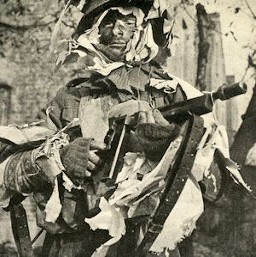
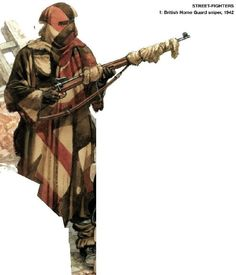


The basic garment is a loose fitting smock. Its construction is not unlike some of the Roman tunics I discussed in a previous blog.
The seams are some distance in from the edge of the sleeves and sides and these parts are deliberately irregular. These would be permitted to fray to further break up the shape.
The garment was to be worn over the woollen battledress and webbing equipment. A flapped opening was provided for accessing the pouches and pockets within. 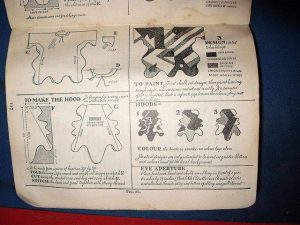



The hood illustrated is a separate piece.
For vision, alternate threads are picked out to create a “slot”. Langdon-Davies cautions against distinctive paired eyeholes. He provides some examples from nature of animals disguising their distinctive eyes with band-like markings.
The book also suggests an alternate design that resembles a short poncho with an integral hood.
He describes this as a waist-length hood with arm openings.
Obviously a poncho with a separate hood is possible too.

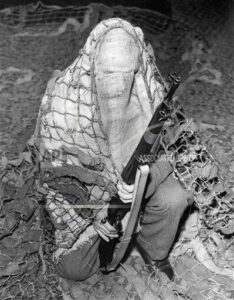
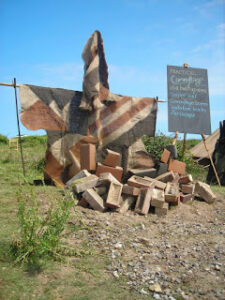
One of the advantages of using hessian is that it has a light, natural colour to begin with. This forms a good base on which to paint contrasting colours, giving good disruption of the human shape.
One interesting suggestion Langdon-Davies makes is that the front and back of the garment might have different patterns.
The camouflage needs of a kneeling man viewed from the front may be different from those of a prone man viewed from above.
Camouflage should be thought of as 3D rather than being two-dimensional patterns.
Additional patches of frayed hessian or cloth can be added to the garment, as can pieces of netting that allow the utilization of natural materials.